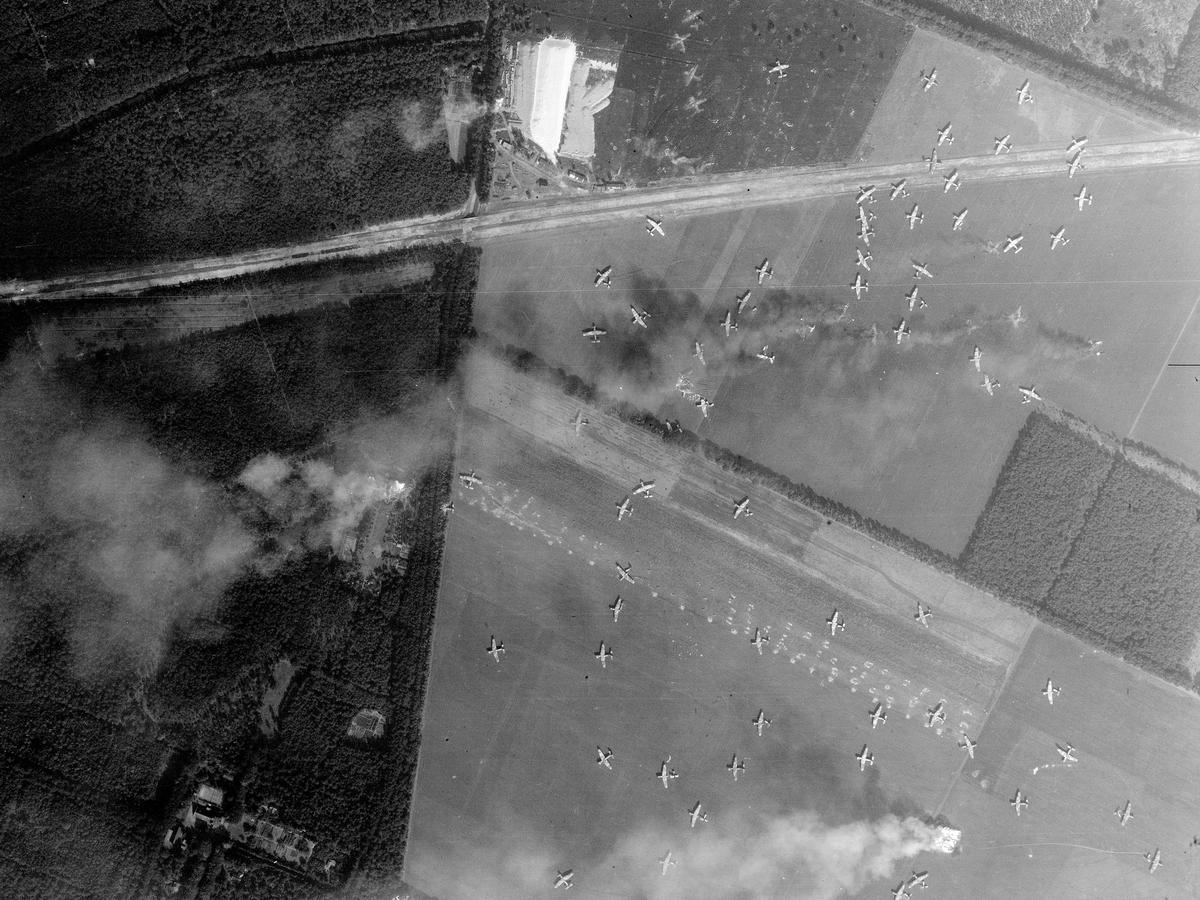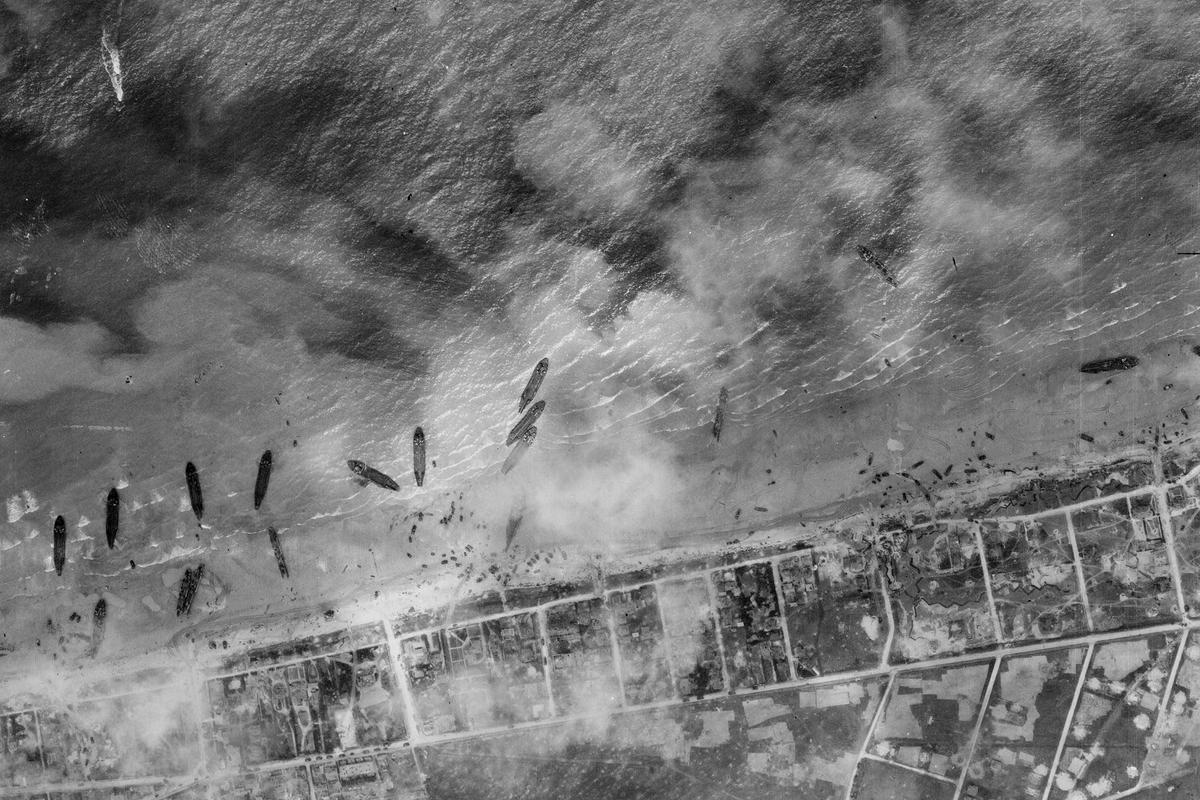Operation Market Garden at 80: Reconnaissance

Three months after D-Day, Operation Market Garden was the Allied attempt to seize key bridges in the Netherlands by airborne assault in September 1944. If successful, the Allies could then cross the Rhine and attack Germany's industrial heartland in the Ruhr. British General Bernard Montgomery conceived the plan and believed its success would end the Second World War by Christmas 1944. Images in the National Collection of Aerial Photography (NCAP) provide a vivid record of the planning and execution of this ambitious plan.
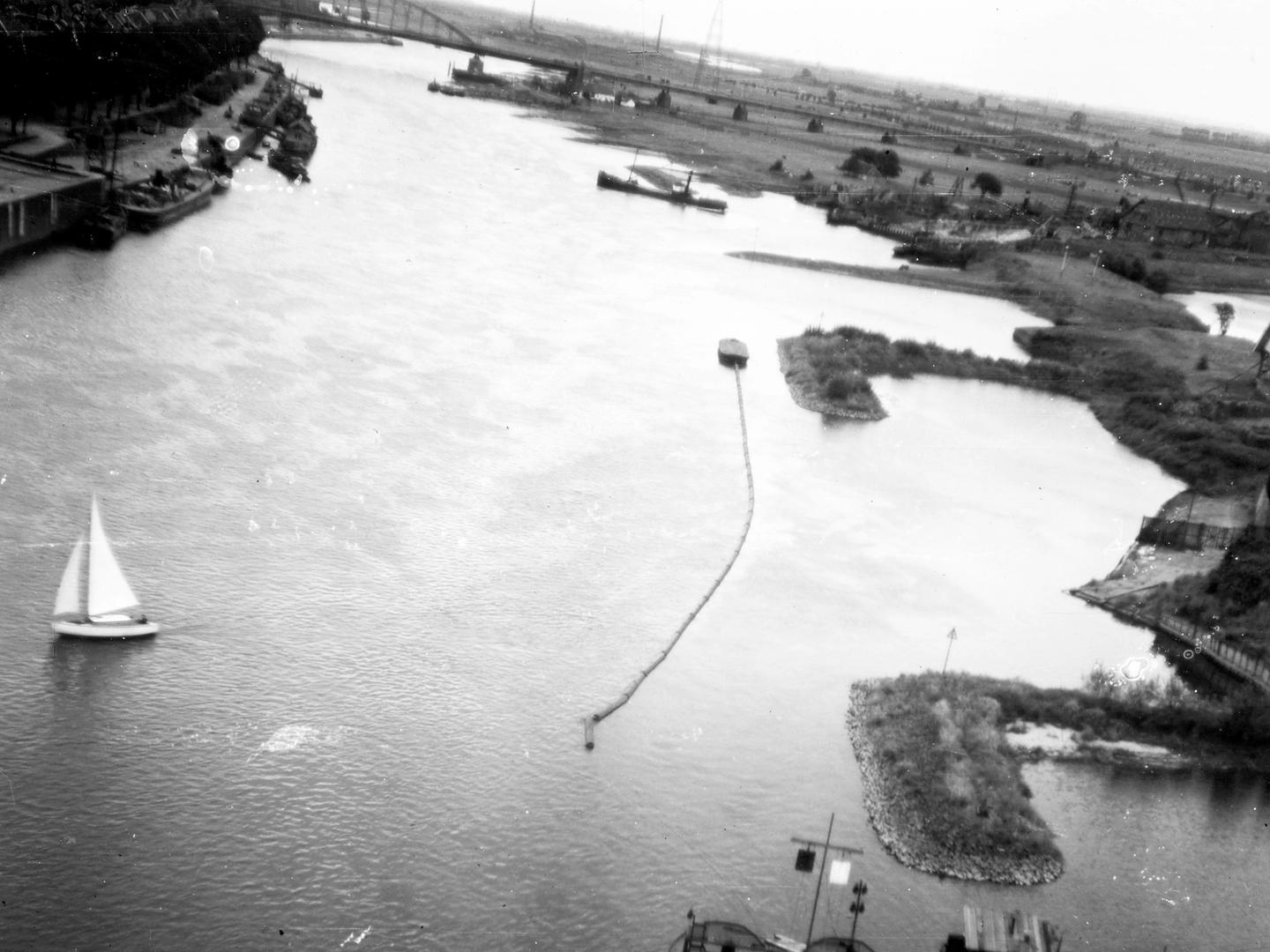
Banking low over a yacht and other shipping, the pilot begins his run-in to the Arnhem road bridge; Collection: JARIC, Sortie: 106G/2676, Frame: SFFO_0002 (06 September 1944)
Background
By the start of September 1944, Allied forces had forced the German army out of almost all of France and Belgium. The next step was to advance into the Netherlands and the vital industrial Ruhr region of Germany. While some Allied commanders (including Supreme Allied Commander General Dwight D. Eisenhower) favoured doing this over a broad front, General Montgomery advocated for a concentrated thrust of Allied forces.

Passengers waiting for a river ferry watch the Spitfire swooping overhead as it nears the Arnhem road bridge; Collection: JARIC, Sortie: 106G/2676, Frame: PFFO_0005 (06 September 1944)
To this end, Montgomery devised and received backing for what would become Operation Market Garden, a two-pronged assault on a series of bridges and towns in the Netherlands, including Eindhoven, Nijmegen and Arnhem. If the operation were successful, the Allies would secure a position on the north side of the River Rhine, isolating the remaining German forces in the Netherlands and providing a base from which to push into Germany.
Operation Comet
Before an operation of this magnitude could be launched, aerial reconnaissance had to be undertaken. This would allow photographic interpreters to assess the strength of German defences at the target bridges and select suitable drop and landing zones for paratroops and gliders. They would also be able to study the planned route of the ground troops who were tasked to link-up with the airborne elements and identify enemy defences and order of battle in the surrounding area.
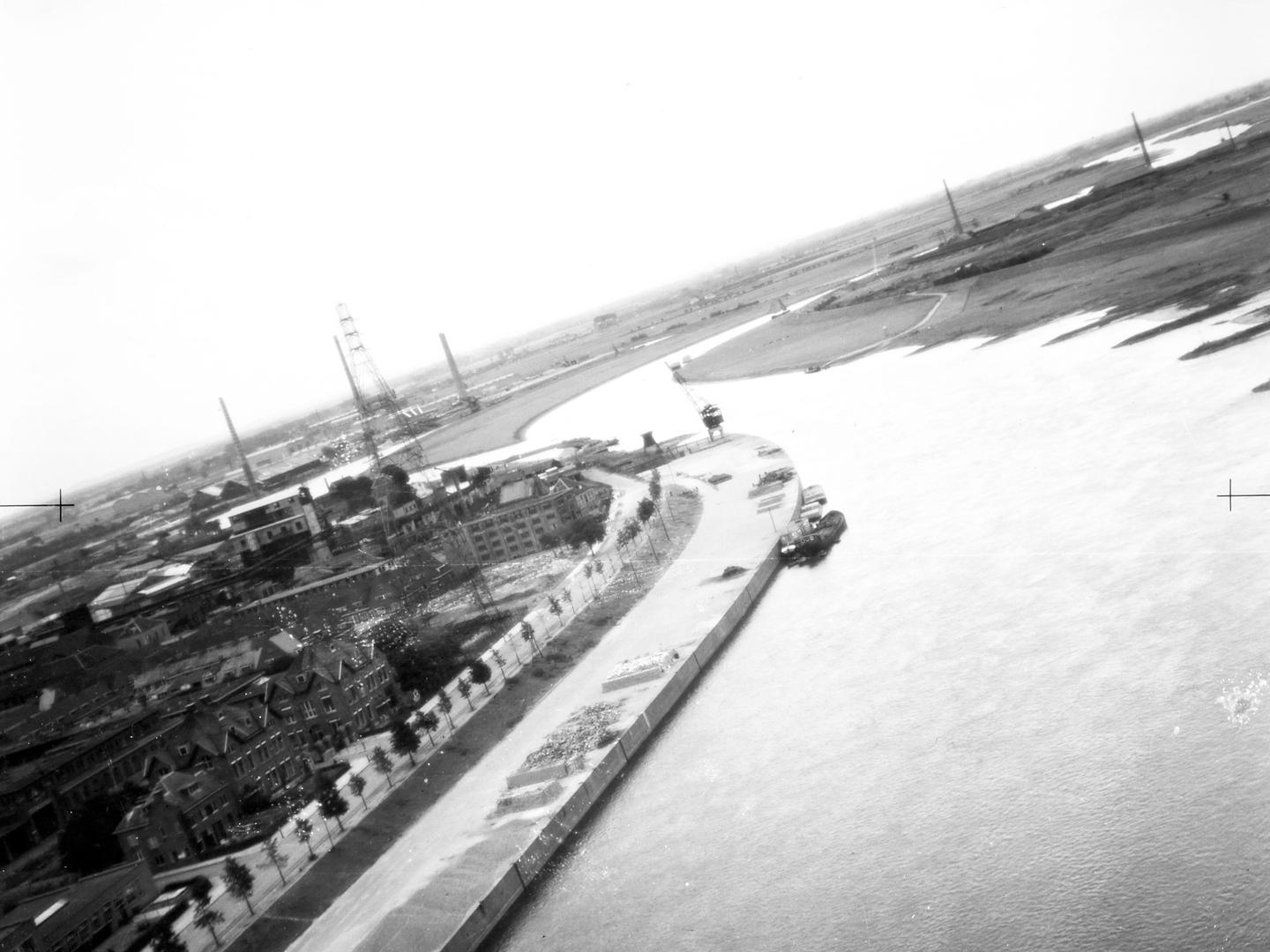
The camera records the presence of building materials and a probable light anti-aircraft position on the Arnhem quayside; Collection: JARIC, Sortie: 106G/2676, Frame: PFFO_0006 (06 September 1944)
On 6 September 1944, photo-reconnaissance Spitfires of 541 Squadron, RAF, were tasked to carry out three low-level sorties over the bridges at Arnhem, Nijmegen and Grave, to collect imagery for use in the planning of Operation Comet, an initially conceived operation employing only one airborne division. Operation Comet was postponed twice before subsequently being cancelled on 10 September and replaced by the much larger Market Garden operation.
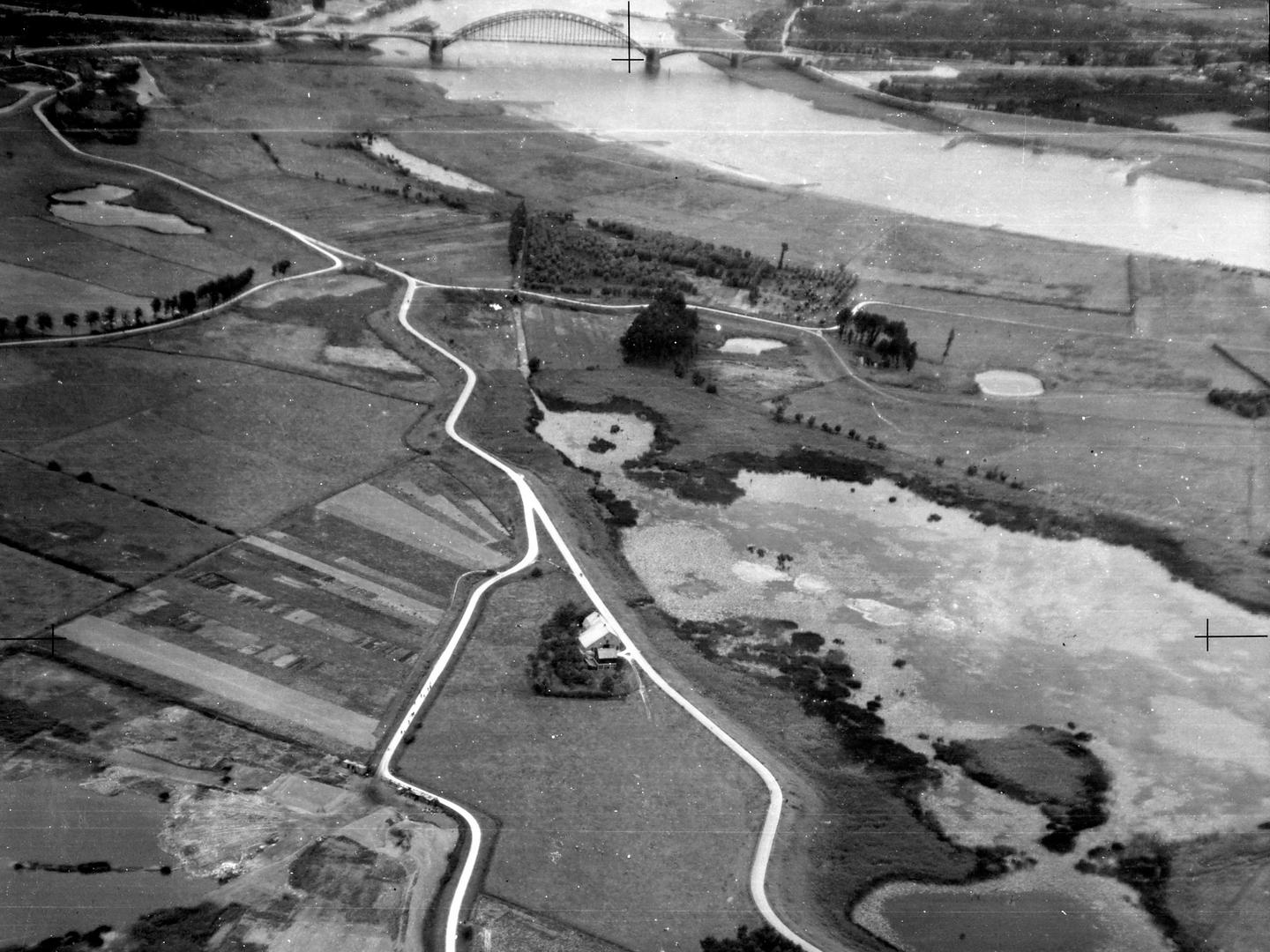
Cyclists are visible on the roads below as the pilot approaches the bridges over the River Waal in Nijmegen; Collection: JARIC, Sortie: 106G/2677, Frame: 0007 (06 September 1944)
Aerial Reconnaissance

Passing over the rail bridge, the camera also records merchant shipping in Nijmegen’s south dock; Collection: JARIC, Sortie: 106G/2677, Frame: 0017 (06 September 1944)
The remarkable images captured during the preparation for Operation Comet are some of the most dramatic in the NCAP Collection. They show the road bridges, rail bridges and ferries that would be the target of the Allied assaults later that month. Cyclists and pedestrians are visible staring up at the low-flying aircraft. Details of nearby German positions such as anti-aircraft guns are also visible.
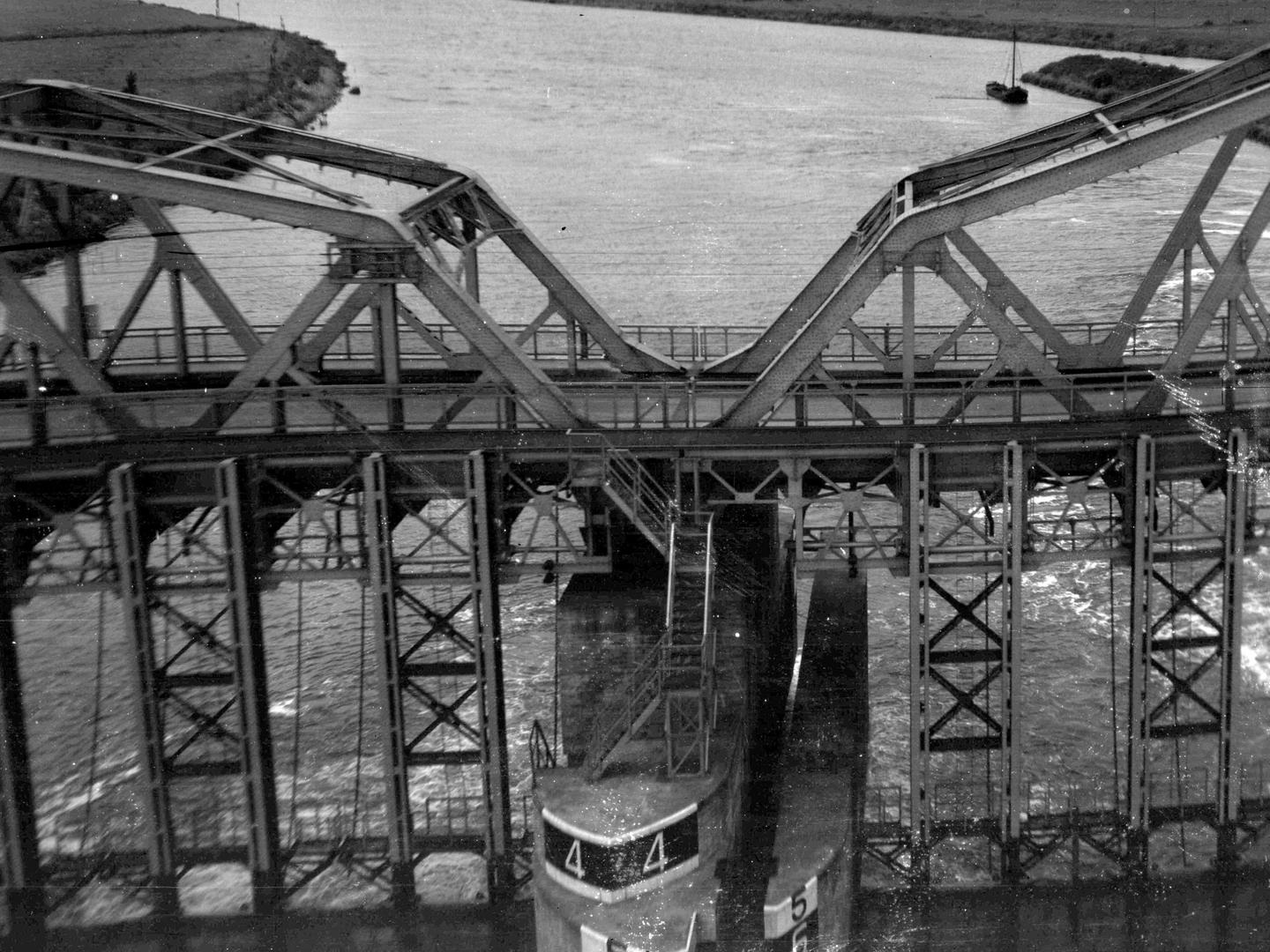
Flying within metres of the road bridge over the River Maas in Grave, the pilot captures details of the steel truss construction; Collection: JARIC, Sortie: 106G/2678, Frame: 0007 (06 September 1944)
Market Garden was conceived and executed remarkably quickly. Allied commanders spent just a week preparing for an operation involving tens of thousands of troops (c.35,000 deployed by air alone). Just 11 days separate the taking of these initial reconnaissance photos from the first landings on Sunday 17 September 1944. The complex legacy of the subsequent week of fighting is still debated today, and would have huge far-reaching and often unintended consequences.
Read more in our next article on Operation Market Garden, to be published on 24 September.
Ben Reiss, NCAP Collections Manager
